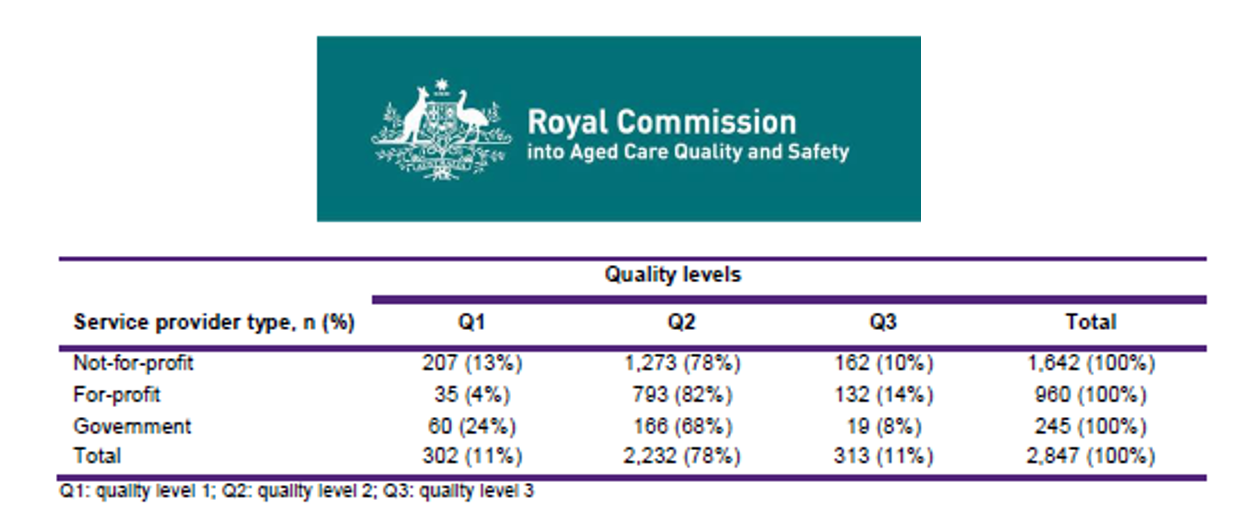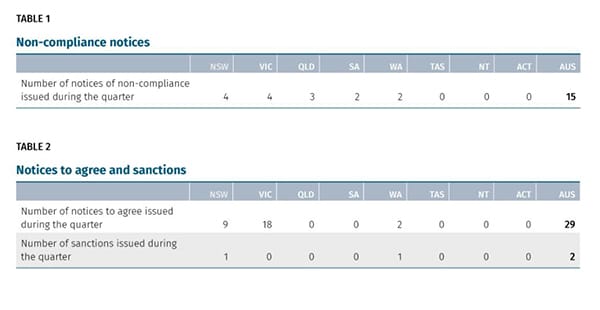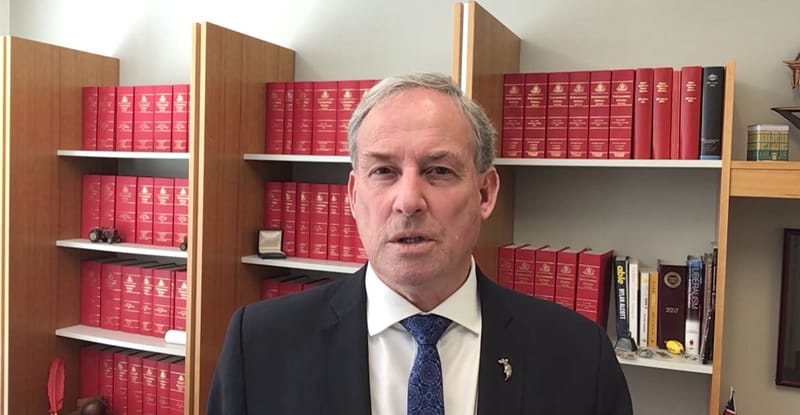Dangerous discussion: should we have For Profit operators in the aged care sector?
You can download the Report here

There is a groundswell of discussion on whether Australia should allow For Profit operators in the residential aged care sector. But the discussions appear to be built on sand. On Thursday the Royal Commission’s Research Paper Nine, a study conducted by the University of Queensland on the cost of residential aged care relative to quality, released its report. The accompanying Royal Commission media release in part said: “The best quality group contain 24% of government owned homes, 13% of not-for-profit homes and just 4% for profit homes”. The research report identified three levels of quality, the top level Q1, mid-level Q2 and bottom level Q3. The report said:
“Facilities operated by government service providers had the highest proportion of facilities in the highest quality Q1 category (24%), followed by the facilities operated by not-for-profit providers (13%). Meanwhile, the for-profit facilities had a very low proportion (4%) of facilities in the Q1 category”. “The government service providers had the lowest proportion of facilities operating at the lowest quality Q3 category (8%), closely followed by the not-for-profit facilities (10%). The for-profit providers, again, were found to have the highest proportion of facilities in the lowest quality Q3 category”. “In the absence of data that can explain the representation differences across quality categories by provider type, we hypothesise that a different funding mechanism, thus profit motivation, might be in place”. “For instance, government-run facilities often received additional funding from the State government. This might allow them to provide more secure employment to staff, and/or to keep a slightly higher staff-resident ratio”. “Both of these could lead to higher work satisfaction and commitment, and as found in the literature, are strongly correlated with a higher quality of care in health and social services (Boakye-Dankwa et al., 2017; Castle and Engberg, 2007; Collier and Harrington, 2008; Spilsbury et al., 2011)”. Looking at the data used to measure Quality, complaints is obviously a major marker. However, the availability of data was mixed: “Issues (complaints) were recorded for approximately one third of government, half of not-for-profit, and two thirds of for-profit operated facilities across the five year period.”
With 245 government homes, this category was being judged on 80 locations. Private operators were being judged on 640 locations.
Where has the Labor position come from?
Also, on Thursday Anthony Albanese presented Labor’s Eight Point Plan for the aged care sector at the National Press Club. The following was a surprise:
“What we will do is wait for the final report of the Royal Commission. But what’s very clear is that once you moved from, essentially, a public system into the privatisation of a whole section of the sector, that needed to be accompanied by very strong regulation. By strong inspection processes." “By making sure that there was transparency, the sort of transparency that I have spoken about today that the Royal Commissioners have spoken about”. “So, we will come up with a more comprehensive long-term plan for aged care after the Royal Commission finalises its report at the beginning of next year”. “But what is very clear is that the problems that have arisen, if you look at where they are, they are almost exclusively in the for-profit system at the moment. And that should tell the story about a failure to properly regulate the system, which is the Commonwealth’s responsibility."
Mr Albanese gave no facts to base this statement. Checking the Top 5 homes in Victoria with COVID infections today, three were Not For Profits. Meanwhile we have had the Victorian Premier, Danial Andrews early in the pandemic, stating he would not place his relatives in anything other than a state operated aged care home. Victoria has six to our knowledge. (And let’s remember that Oakden was a state owned aged care home). The Unions generally have been pursuing the departure of the For Profit operators from the sector for a number of years (while also battling some major Not For Profits on wages and nurse ratios). The facts on quality just don’t stack up against private operator. Will this be a smokescreen to divert serious discussion or is it a movement to exit Private Operators? We feel the former, because politicians have a track record of not pursuing the hard tasks. Which this would be one. You can download the Report here.





